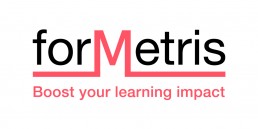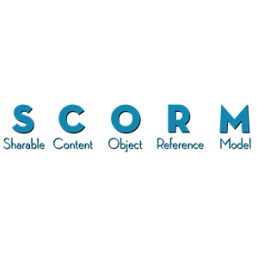GuyKat Partners Formetris
--GuyKat Service Announcement--
GuyKat today proudly announce the launch of their re-seller partnership with forMetris. Starting immediately, GuyKat will offer forMetris products to the UK & Ireland market. The new partner is a French-based software provider whose solutions focus on ensuring that ROI from L&D initiatives can be measured.
The products are aimed at all enterprises who have significant investments in training provision. The solutions offered complete the wider suite of offerings from GuyKat which allow a full end-to-end service to clients. GuyKat now offer bespoke eLearning (in house), LMS and LMS management (Docebo), authoring tools (Elucidat), off-the-shelf learning (Open Sesame), and now eLearning evaluation and ROI assurance (forMetris).
Quotes:
" There's a famous quote from Wannamaker that 'half the money I spend on advertising is wasted, the problem is I don't know which half'. I think the same could be said by most L&D directors about their learning spend. They commission development programs, or purchase suites of training, but then struggle to get visibility of what is really working. There's been a gap in the market for tools which bring this visibility. We're excited to be working with forMetris to bridge that gap in the UK."
GuyKat CEO, Guy McEvoy
"We've been talking with forMetris for over six months and truly getting to understand the product. Having met the forMetris team out in Toronto at the back end of last year, and having formally agreed the re-seller agreement, we're looking forward to introducing the product to our UK clients."
LMS Consultant, Joanne Payne
For more information please contact our consultant Joanne Payne at joanne.payne@guykat.com
Perform - Brilliant new feature for Docebo 7.0
Perform - Brilliant new feature for Docebo 7.0
In its latest release, Docebo introduces the Perform module which brings talent management capability to the Docebo LMS.
What is Perform?
Perform is a new feature on the Docebo LMS that is designed to allow you to evaluate your employee’s competencies and detect skill gaps. Once the skill gaps are detected, you can then intervene, offering learning and development opportunities. This could be done through formal learning plans and courses, or more informal videos or documents.
Some of the exciting features Perform has, include:
- An off-the-shelf skills catalogue
- Ability to create, import, and edit your skills and roles in bulk
- Ability to assign skills to roles
- You can map courses, learning plans, and informal learning assets
- Rating Scale
- Skill evaluation status monitoring
- Skill evaluation calibration
- Skills gap analysis
- Skills, roles and gaps reporting
A particular feature we thought was great, was the ability to enrol a user with a specific skill gap to a course or learning plan that will support in filling the gaps in their knowledge.
GuyKat are a UK based Docebo partner who work with clients globally. We can support organisations with their implementation of the Docebo platform, including the perform module featured above.
How you can get access to it
It’s simple. Email david.brannon@guykat.com to set up a tailored webinar. David would love to give you a demonstration of the platform and its awesome new features, including Perform!
Good vs. Bad User Experience
Good vs. Bad User Experience
Our talented eLearning designer, Zoe Hall, explains what makes a negative user experience and offers tips on how she approaches building an effective user experience.
"A User Interface is like a joke. If you have to explain it, it’s not that good."
It's useful to understand the difference between the terms User Interface (UI) and User Experience (UX):
- UI – the product used to access the content – e.g. website, app, game, LMS etc.
- UX - the entire experience the user has whilst navigating the through UI product, and the associating feelings and behaviours.
The UI in eLearning can have a huge impact on the quality of the UX. It can be the difference between an engaged and a distracted learner. A lot of thought should be put into selecting the most appropriate UI format. This provides a strong foundation that will allow the eLearning to be easy to navigate. Anything counterintuitive in the UI is distracting.
What makes a bad eLearning UX?
- Overly complex content
Being faced with too much information will overwhelm the learner from the outset. Nobody wants to endure paragraphs of text. As best practice, making sure the content is succinct is crucial.
Our clients are subject matter experts. They know their stuff! They provide us with the meaningful content their learners need to grasp. My job is to convert detailed information into digestible eLearning that is quick to access and easy to understand.
- A repetitive, predictable layout
Learners may lose concentration if the flow of the course becomes too predictable. For example, placing the Next button in the same position throughout the course is consistent and considered good UI 99% of the time. However, for complex, technical or compliance training, the risk is that a less diligent learner becomes disengaged. An overly consistent UI can make it too easy to mindlessly skip content. In these cases, it can make sense to play around with the layout.
I use a variety of methods to engage the learner. For example, changing titles of the buttons to Click for more information to reveal hidden material. Regardless of the layout, button style, feedback methods and colour themes are all factors that should remain constant through the eLearning experience. I use client brand guidelines to ensure that the training looks professional and on brand.
- Ineffective instructional design
A client can provide the most detailed and expert information on a topic, but without a logical UX, the information is useless. The content must be formatted in a layout that makes sense to the user to transform the information into retained knowledge. For example, using a mobile phone has become such a common activity for us all, so it makes sense for eLearning to be accessible on numerous devices. eLearning modules that are responsive on desktop, tablet and mobile will likely reach more learners. GuyKat storyboard with clients to ensure that our designs meet the needs of your users.


- When the user asks "What do I do now?"
If users are left asking: "What do I do now?" when working through a course, then the eLearning has failed. A confused user = a lack of concentration.
The navigation must be simple to follow. If presented appropriately, the navigation should speak for itself and not have to be explained.
- Difficult to retain information
The learner can miss out on meeting the learning objectives. This may be due to them skipping their way through the course, or just skimming over the valuable and insightful text. This is one of the biggest challenges in eLearning, as it can be difficult to gauge whether the learner is truly engaged.
A great way to resolve this is using a great LMS. It's important to appreciate that the user experience begins even before the eLearning has been accessed. The LMS should have seamless navigation that should come intuitively to users. GuyKat are proud UK partners of Docebo. We love Docebo because the UX means learners get to the content effortlessly. With many other LMS solutions the user may start off in the wrong mindset because they've just had a horrible UX before they've even launched the beautiful content we have built. This is a shame. If your LMS has a bad UI your overall learning journey will still be a bad UX, so you need to dump it.
Zoe’s steps to creating an effective user experience
1. Produce a plan
I begin by writing a detailed script then I start designing. I create a storyboard and evaluate the best interactions for your content.
2. Construct the right interactivity for the learning objective
Some authoring tools provide plenty of interactive opportunities, whilst others come with limitations. If my authoring tool does not allow me to create a certain interaction, then Ill explore how else I could make it work, I don't limit myself.
3. Always carry out Quality Assurance
Its true that your eyes read what they want you to see. Sometimes a fresh pair of eyes can pick up things that are easily missed. I always ask for thorough feedback and the QA team at GuyKat are happy to help. The pickier, the better.
4. Draw inspiration from other sources
If I come across a well-designed website or if an advertisement catches my eye, I make a note of what I liked about it, what was attractive about it. I carry these ideas into my designing when I need some inspiration.
Summary
Its important to not become complacent when designing eLearning, so by putting myself in the eyes of the learner, I make sure the UX is consistent, interesting, interactive and engaging to meet the client's objectives.
What is SCORM? In Layman's Terms...
If you’re new to eLearning or Learning Management Systems you’ll often hear or see the word SCORM. It’s a piece of jargon we use that means nothing to people outside our industry. So, let’s explain SCORM in layman’s terms:
- SCORM is the most common standard format that eLearning modules are published in. It allows content to be uploaded to and tracked by a Learning Management System.
Why do we need a standard? Well, there are two main steps to delivering eLearning. First you make the content, then you put the content online. Typically, you make the content using a computer program called an ‘authoring tool’. There are many authoring tools on the market; Adobe Captivate, Articulate Storyline or Elucidat are examples. The next step is to put your content online. You do this using a Learning Management System (‘LMS’). Example LMSs are Totara, Moodle or Docebo. It is critical your content can ‘talk’ to your LMS so that you can track how your learners are doing. You want to capture data such as; Who has done which course? How long they looked at the course? What score did they get? Which specific questions did they get wrong? This is the magic of SCORM. The SCORM standard defines how this data is captured and communicated.
Having a standard allows learning and development teams to use their preferred choice of authoring tool and their preferred choice of LMS without compatibility issues.
SCORM is not a standard for the technology that the eLearning itself is built with. So, you can have eLearning built in Flash which is packaged into SCORM format or eLearning built in HTML 5 packaged into SCORM format or any other technology.
A SCORM file, typically looks exactly like a zip file. If an LMS asks you to upload a SCORM file you upload it in whole – don’t unzip it. This is very easy on Docebo.
Things are slightly complicated by there being more than one flavour of SCORM e.g. SCORM 2004 and SCORM v1.2. There are also other competing standards e.g. AICC or Tin Can/xAPI. These formats are less common. xAPI is gaining traction, however, it is still a bleeding edge technology that we would avoid for now. Whichever you use Docebo LMS is compatible with ALL these standards. We’ll do another article on the different types in future.
Whether you are looking to buy SCORM content, build-your-own SCORM content, or find an LMS to host SCORM content we can help you. eLearning is what we do. Please feel free to get in touch.





